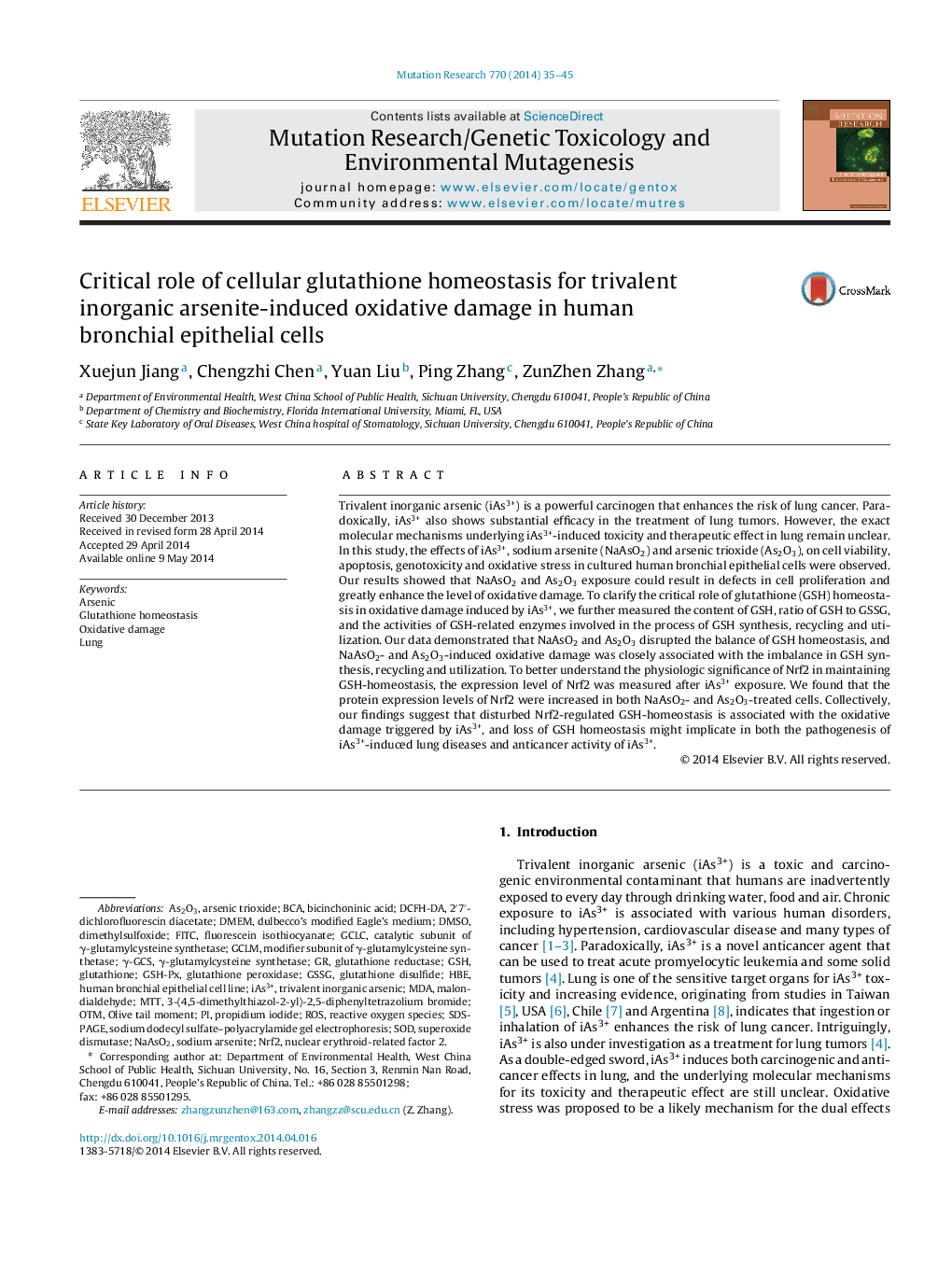| کد مقاله | کد نشریه | سال انتشار | مقاله انگلیسی | نسخه تمام متن |
|---|---|---|---|---|
| 2147910 | 1548591 | 2014 | 11 صفحه PDF | دانلود رایگان |
• iAs3+ caused defect in cell proliferation and enhanced oxidative damage in HBE cell.
• iAs3+ disrupted the processes of GSH synthesis, recycling and utilization.
• Nrf2-regulated GSH-homeostasis was associated with iAs3+-triggered oxidative damage.
• This mechanism may involve in pathogenesis and anticancer activity of iAs3+ in lung.
Trivalent inorganic arsenic (iAs3+) is a powerful carcinogen that enhances the risk of lung cancer. Paradoxically, iAs3+ also shows substantial efficacy in the treatment of lung tumors. However, the exact molecular mechanisms underlying iAs3+-induced toxicity and therapeutic effect in lung remain unclear. In this study, the effects of iAs3+, sodium arsenite (NaAsO2) and arsenic trioxide (As2O3), on cell viability, apoptosis, genotoxicity and oxidative stress in cultured human bronchial epithelial cells were observed. Our results showed that NaAsO2 and As2O3 exposure could result in defects in cell proliferation and greatly enhance the level of oxidative damage. To clarify the critical role of glutathione (GSH) homeostasis in oxidative damage induced by iAs3+, we further measured the content of GSH, ratio of GSH to GSSG, and the activities of GSH-related enzymes involved in the process of GSH synthesis, recycling and utilization. Our data demonstrated that NaAsO2 and As2O3 disrupted the balance of GSH homeostasis, and NaAsO2- and As2O3-induced oxidative damage was closely associated with the imbalance in GSH synthesis, recycling and utilization. To better understand the physiologic significance of Nrf2 in maintaining GSH-homeostasis, the expression level of Nrf2 was measured after iAs3+ exposure. We found that the protein expression levels of Nrf2 were increased in both NaAsO2- and As2O3-treated cells. Collectively, our findings suggest that disturbed Nrf2-regulated GSH-homeostasis is associated with the oxidative damage triggered by iAs3+, and loss of GSH homeostasis might implicate in both the pathogenesis of iAs3+-induced lung diseases and anticancer activity of iAs3+.
Figure optionsDownload as PowerPoint slide
Journal: Mutation Research/Genetic Toxicology and Environmental Mutagenesis - Volume 770, August 2014, Pages 35–45
